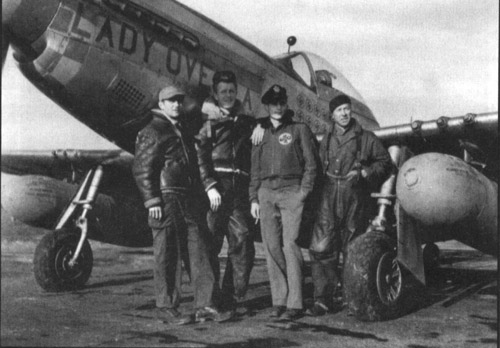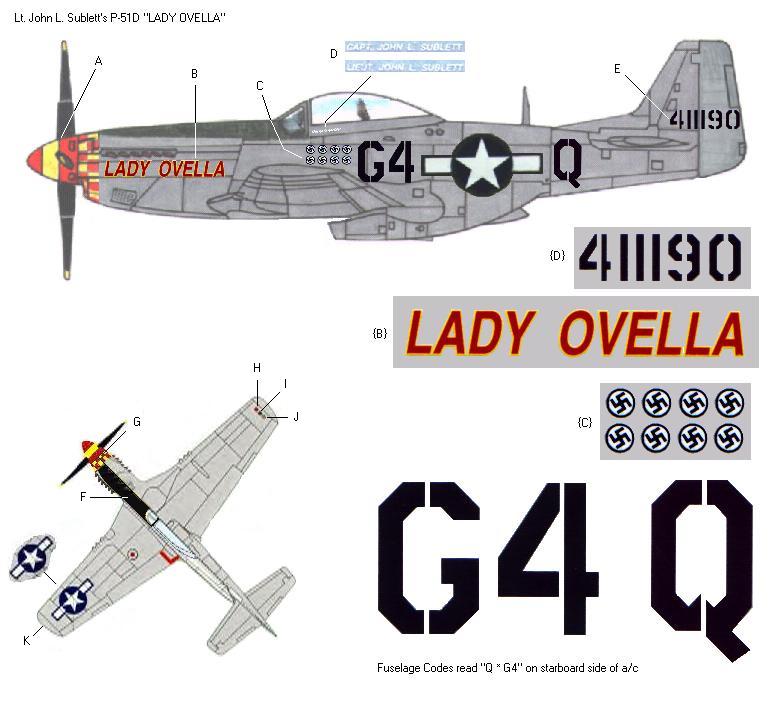357th FG Profile

Lt John Sublett, 8 victories with his ground crew and his Mustang “Lady Ovella”
P-51D “Lady Ovella”
1st Lt. John L. Sublett’s P-51D Mustang “LADY OVELLA”
Spring 1945
Modeler Tips:
Side View Notes:
A. Rear red band on propeller boss extends onto spinner to leading edge of blades when in neutral pitch. Determine width of yellow band by dividing remainder of spinner evenly.
B. “LADY OVELLA” in red, bordered in yellow, all capitals rendered along lower strip panel seam.
C. 8 black swastikas on white circles outlined in black- 2 each in 4 columns.
D. Pilot’s rank and name in white over natural aluminum, parallel to canopy rail.
E. Tail Number- black “411” on fin, “190” on rudder.
Upper & Lower View Notes:
F. Glare shield is flat dark green and tapers away from upper cowl seam toward center of aircraft from forward bulkhead to propeller boss.
G. Width of checkers reduced on underside in order to fit evenly on the narrow surfaces of the chin scoop area. H, I, J. Red, Green, Yellow navigation lights- circular and flush with wing panel.
K. Formation Lights- Red (Port) and Green (Starboard)
Overall Modeling Tips:
*John Sublett was promoted to the rank of Captain near the end of the war, and pictures of “LADY OVELLA” indicate that a ninth kill mark was added to the end of the top row next to the “G”.
*Paint on the flat colored glare shield first- then mask them off and paint the remainder of the aircraft in natural aluminum color. Most metal colors will be marred or removed by masking materials and should therefore be applied last. Note that this aircraft did not wear any recognition stripes,
after the New Year ’45 most Mustangs in the ETO adopted a cleaner appearance by omitting theatre markings.
*There were no antenna wires or mirrors installed in this aircraft.
*After building several 357th A/C over the past 30 years, I recommend painting the nose area forward of the exhaust cutout yellow when the flat features are painted. Then when decal time comes, carefully cut away the yellow squares from the checkerboard decal and apply the remaining strip of red checkers to the nose.
This method significantly reduces the potential for bubbles, and wrinkles plus it makes exact alignment of the decal easier.
*Prior to assembly, wash clear plastic parts with a mild glass cleaner and gently wipe dry. Then use a Q-Tip to evenly spread clear liquid floor wax (Future Brand seems to get the best results) on both inside & outside. Protect from dust and let dry for at least 2 hours. The wax fills in microscopic flaws and creates an even gloss that is clearer & shines brighter than the original plastic underneath.
Repli-Scale Decal Sheet 48-5058

